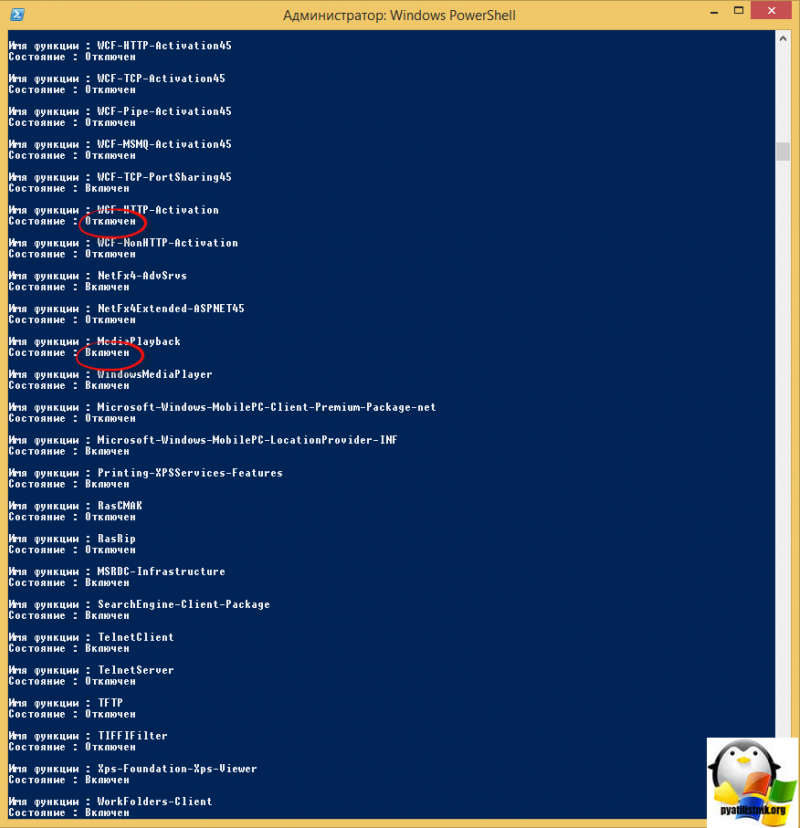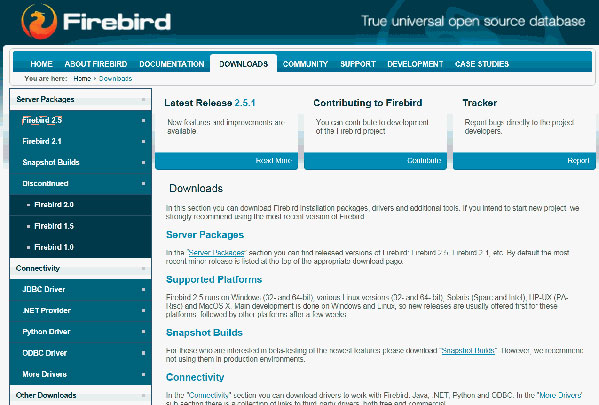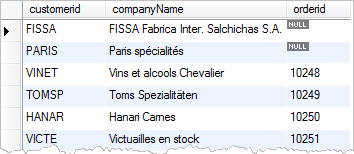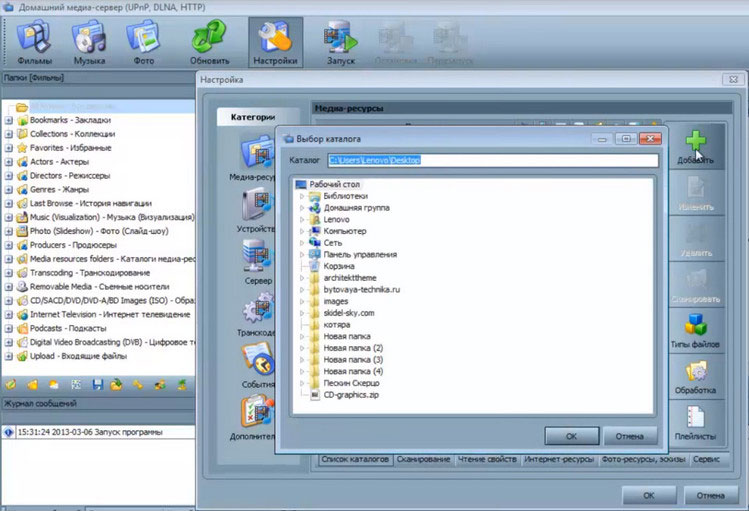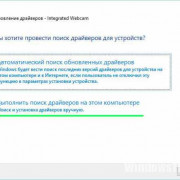Sql server express localdbsql server express localdb
Содержание:
- Технические особенности
- Ограничения
- Replication
- Преимущества
- Команды OSQLOSQL Commands
- Поддерживаемые сценарииSupported scenarios
- Shared instances of LocalDB
- Install LocalDB
- Использование
- Пользовательские экземплярыUser instances
- Поддерживаемые компонентыSupported Features
- RDBMS scalability and performance
- Description
- Programmability
- Scale limits
Технические особенности
Данная версия поставляется с Express Manager и диспетчером компьютеров, двумя инструментами GUI для настройки и установки. Версия ограничивается использованием общей памяти в локальной системе. Подключение к базе данных может осуществляться через TCP/IP или именованные каналы. Тем не менее веб-доступ через HTTP или высокопроизводительный доступ с использованием VIA не поддерживается. Вы должны специально включить сетевое взаимодействие с Express, и подключенный пользователь должен включить службу браузера SQL Server, чтобы выполнить сетевое подключение. Общая память не использует службу Browser.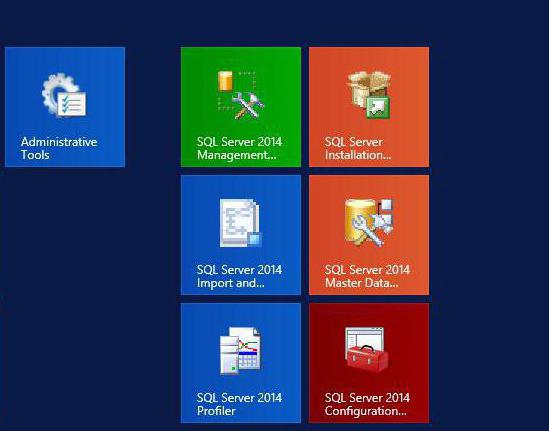
Ограничения
Перед развертыванием SQL Server Express вы должны узнать о своих ограничениях:
-
Максимальная память, используемая SQL Server Database Engine — 1 ГБ.
-
Максимальный размер каждой реляционной базы данных — 10 ГБ.
-
Агент SQL не включен в Express. Агент SQL — это фоновый инструмент, который позволяет администраторам автоматизировать такие задачи, как резервное копирование данных, настройка репликации базы данных, планирование заданий, пользовательские разрешения и мониторинг базы данных.
-
Предел в буферном кеше для каждого экземпляра составляет 1 МБ ОЗУ.
-
Механизм реляционной базы данных ограничен меньшим количеством сокета.
Replication
| Feature | Enterprise | Standard | Web | Express with Advanced Services | Express |
|---|---|---|---|---|---|
| Heterogeneous subscribers | Yes | Yes | No | No | No |
| Merge replication | Yes | Yes | Yes (Subscriber only) | Yes (Subscriber only) | Yes (Subscriber only) |
| Oracle publishing | Yes | No | No | No | No |
| Peer to peer transactional replication | Yes | No | No | No | No |
| Snapshot replication | Yes | Yes | Yes (Subscriber only) | Yes (Subscriber only) | Yes (Subscriber only) |
| SQL Server change tracking | Yes | Yes | Yes | Yes | Yes |
| Transactional replication | Yes | Yes | Yes (Subscriber only) | Yes (Subscriber only) | Yes (Subscriber only) |
| Transactional replication to Azure | Yes | Yes | No | No | No |
| Transactional replication updateable subscription | Yes | Yes | No | No | No |
Преимущества
Некоторые преимущества данного программного решения:
-
Бесплатность: огромное преимущество SQL Server Express заключается в том, что оно бесплатное. Единственными расходами являются затраты времени на загрузку и настройку системы. Если вам требуется SQL Server, то версия Express подойдет наилучшим образом.
-
Масштабируемость: версия SE является идеальной отправной точкой для небольших независимых поставщиков программного обеспечения (ISV), поскольку он может использоваться с любым приложением. Лицензирование позволяет Express быть включенным как часть приложения или продукта. Хотя существуют ограничения по использованию памяти и сокета, они не настолько критичны. Экспресс не ограничивается одним пользователем — это распространенный миф. Существует ограничение базы данных на 10 ГБ, но это максимальный размер для каждого хранилища, что означает, что вы можете иметь несколько баз, в которых хранится до 10 ГБ данных. Если вы являетесь независимым поставщиком программного обеспечения, и ваша компания испытывает высокие темпы роста, что приводит к увеличению потребностей в базе данных, вы можете перейти только на платную версию SQL Server.
-
Безопасность: в данном приложении есть возможность бесплатного онлайн-резервного копирования, которое поможет защитить ваши бизнес-данные, если что-то пойдет не так. Администраторы должны следовать правилам безопасности, таким как ограничение доступа к папкам резервного копирования и политике паролей Windows.
-
Особенности: несмотря на то что Express — это «облегченная» версия SQL Server, по-прежнему существует впечатляющий набор функций, который будет платным в других системах и является бесплатным в этом решении. Express поддерживает полнотекстовый поиск, собственный XML и время выполнения Common Language Runtime. Другие ключевые функции включают конструктор отчетов, позволяющий создавать настраиваемые выгрузки.
Команды OSQLOSQL Commands
Помимо инструкций Transact-SQLTransact-SQL в программе osqlтакже доступны следующие команды.In addition to Transact-SQLTransact-SQL statements within osql, these commands are also available.
| Get-HelpCommand | ОписаниеDescription |
|---|---|
| GOGO | Выполняет все инструкции, введенные после последней команды GO.Executes all statements entered after the last GO. |
| RESETRESET | Очищает все введенные инструкции.Clears any statements you have entered. |
| QUIT или EXIT( )QUIT or EXIT( ) | Завершение работы программы osql.Exits from osql. |
| CTRL+CCTRL+C | Завершает запрос без выхода из программы osql.Ends a query without exiting from osql. |
Примечание
Команды !!The !! и ED больше не поддерживаются программой osql.and ED commands are no longer supported by osql.
Признаки конца команды GO (по умолчанию), RESET, EXIT, QUIT и CTRL+C распознаются только в начале строки, сразу после запроса программы osql .The command terminators GO (by default), RESET EXIT, QUIT, and CTRL+C, are recognized only if they appear at the beginning of a line, immediately following the osql prompt.
GO обозначает конец пакетного файла и исполнения любых кэшированных инструкций Transact-SQLTransact-SQL .GO signals both the end of a batch and the execution of any cached Transact-SQLTransact-SQL statements. При нажатии клавиши ВВОД в конце каждой строки ввода программа osql выполняет кэширование инструкций из этой строки.When you press ENTER at the end of each input line, osql caches the statements on that line. При нажатии клавиши ВВОД после ввода команды GO все текущие инструкции в кэше отправляются в виде пакета в SQL ServerSQL Server.When you press ENTER after typing GO, all of the currently cached statements are sent as a batch to SQL ServerSQL Server.
Последняя версия программы osql работает таким образом, как будто в конце любого выполняемого скрипта имеется подразумеваемая инструкция GO, поэтому выполняются все инструкции скрипта.The current osql utility works as if there is an implied GO at the end of any script executed, therefore all statements in the script execute.
Закончите команду с помощью ввода строки, которая начинается с признака конца команды.End a command by typing a line beginning with a command terminator. Следом за признаком конца команды можно ввести целое число, чтобы указать, сколько раз выполнить команду.You can follow the command terminator with an integer to specify how many times the command should be run. Например, чтобы выполнить эту команду 100 раз, введите:For example, to execute this command 100 times, type:
Результаты выводятся на печать один раз после завершения.The results are printed once at the end of execution. Программаosql не принимает более 1000 символов в одной строке.osql does not accept more than 1,000 characters per line. Большие инструкции должны вводиться в несколько строк.Large statements should be spread across multiple lines.
Для повторного вызова и изменения инструкций osql могут использоваться средства повторного вызова команд Windows.The command recall facilities of Windows can be used to recall and modify osql statements. Существующий буфер запросов можно очистить с помощью команды RESET.The existing query buffer can be cleared by typing RESET.
При запуске хранимых процедур программа osql выводит пустую строку между результирующими наборами в пакете.When running stored procedures, osql prints a blank line between each set of results in a batch. Кроме того, сообщение «обработано строк: 0» не выводится, если оно не применимо к выполненной инструкции.In addition, the «0 rows affected» message does not appear when it does not apply to the statement executed.
Поддерживаемые сценарииSupported scenarios
В следующей таблице показана матрица поддерживаемых сценариев для установки SQL ServerSQL Server в Server Core.The following table shows the supported scenario matrix for installing SQL ServerSQL Server on a Server Core.
| УстановкаInstallation | Допустимый целевой объектValid target |
|---|---|
| SQL ServerSQL Server , выпускиeditions | Все 64-разрядные версии SQL ServerSQL ServerAll SQL ServerSQL Server 64-bit editions |
| SQL ServerSQL Server , языкlanguage | Все языкиAll languages |
| SQL ServerSQL Server , язык в языке ОС-локали (сочетание)language on OS language/locale (combination) | ENG SQL ServerSQL Server для JPN (японский) WindowsENG SQL ServerSQL Server on JPN (Japanese) WindowsENG SQL ServerSQL Server для GER (немецкий) WindowsENG SQL ServerSQL Server on GER (German) WindowsENG SQL ServerSQL Server для CHS (китайский — Китай) WindowsENG SQL ServerSQL Server on CHS (Chinese-China) WindowsENG SQL ServerSQL Server для ARA (арабский (SA)) WindowsENG SQL ServerSQL Server on ARA (Arabic (SA)) WindowsENG SQL ServerSQL Server для THA (тайский) WindowsENG SQL ServerSQL Server on THA (Thai) WindowsENG SQL ServerSQL Server для TRK (турецкий) WindowsENG SQL ServerSQL Server on TRK (Turkish) WindowsENG SQL ServerSQL Server для pt-PT (португальский, Португалия) WindowsENG SQL ServerSQL Server on pt-PT (Portuguese Portugal) WindowsENG SQL ServerSQL Server для ENG (английский) WindowsENG SQL ServerSQL Server on ENG (English) Windows |
| Выпуск WindowsWindows edition | Windows Server 2019 DatacenterWindows Server 2019 Datacenter Windows Server 2019 StandardWindows Server 2019 Standard Windows Server 2016 DatacenterWindows Server 2016 DatacenterWindows Server 2016 StandardWindows Server 2016 StandardWindows Server 2012Windows Server 2012 R2 DatacenterR2 DatacenterWindows Server 2012Windows Server 2012 R2 StandardR2 StandardWindows Server 2012Windows Server 2012 R2 EssentialsR2 EssentialsWindows Server 2012Windows Server 2012 R2 FoundationR2 FoundationWindows Server 2012Windows Server 2012 DatacenterDatacenterWindows Server 2012Windows Server 2012 StandardStandardWindows Server 2012Windows Server 2012 EssentialsEssentialsWindows Server 2012Windows Server 2012 FoundationFoundation |
To support scenarios where multiple users of the computer need to connect to a single instance of LocalDB, LocalDB supports instance sharing. An instance owner can choose to allow the other users on the computer to connect the instance. Both automatic and named instances of LocalDB can be shared. To share an instance of LocalDB, a user selects a shared name (alias) for it. Because the shared name is visible to all users of the computer, this shared name must be unique on the computer. The shared name for an instance of LocalDB has the same format as the named instance of LocalDB.
Only an administrator on the computer can create a shared instance of LocalDB. A shared instance of LocalDB can be unshared by an administrator or by the owner of the shared instance of LocalDB. To share and unshared an instance of LocalDB, use the and methods of the LocalDB API, or the share and unshared options of the utility.
Install LocalDB
Install LocalDB through the installation wizard or by using the SqlLocalDB.msi program. LocalDB is an option when installing SQL Server Express LocalDB.
Select LocalDB on the Feature Selection/Shared Features page during installation. There can be only one installation of the LocalDB binary files for each major SQL Server Database Engine version. Multiple Database Engine processes can be started and will all use the same binaries. An instance of the SQL Server Database Engine started as the LocalDB has the same limitations as SQL Server Express.
An instance of SQL Server Express LocalDB is managed by using the utility. SQL Server Express LocalDB should be used in place of the SQL Server Express user instance feature, which was deprecated.
Использование
Варианты установки
Microsoft SQL Server Express представлен в вариантах:
- SQL Server Express с пакетом обновления
- Базовый экспресс-выпуск сервера базы данных, включающий функциональный модуль базы данных, который подходит для принятия удаленных подключений или удаленного администрирования. Доступен бесплатно.
- SQL Server Express c дополнительными сервисами
- Дополнительные возможности, имеющиеся в экспресс-выпуске, включая модуль базы данных, сервисы отчетности и полнотекстовый поиск. Доступен бесплатно при присоединении к программе Visual Studios Dev Essentials.
- SQL Server Express LocalDB
- Встраиваемый в приложения SQL Server Express с использованием LocalDB — упрощенной версии экспресс-выпуска. Доступен бесплатно в качестве одного из вариантов при скачивании SQL Server 2017 Express с пакетом обновления.
В бесплатной версии Express, 2005 года, был предложен следующий стандартный подход к вариантам установки. Как правило, установщики SQL 2005 Express поставляются со следующим согласованным соглашением об именовании:
- SQLEXPR.EXE
- Имеет установщики для 32-разрядных и 64-разрядных процессоров, но c базовыми установками.
- SQLEXPR32.EXE
- Имеет только установщик для 32-битных процессоров (все еще базовыми установками).
- SQLEXPRWT.EXE
- Имеет установщики для 32-разрядных и 64-разрядных процессоров и SQL Server Management Studio Express (SSMSE) (2008 R2).
- SQLEXPR_ADV.EXE
- Имеет основы и SQL Server Management Studio Express (SSMSE) + отчеты и полнотекстовые запросы.
- SQLEXPR_TOOLKIT.EXE
- Имеет основы SSMSE и Business Intelligence Development Studio (BIDS) .
Архитектура
Рисунок 1 — Архитектура Microsoft SQL Server Express
Внешний доступ предоставляется через слой протоколов SQL Server. Все операции в SQL Server могут быть выполнены путем обращения через определенный формат, называемый Tabular Data Stream (TDS). TDS протокол уровня приложения, используемый для передачи данных между сервером и клиентом. TDS может быть обернут другими физическими и транспортными протоколами, включая TCP/IP. Следовательно, доступ к SQL Server доступен и вне него. Архитектура можно увидеть на рисунке 1.
Кроме того, есть нативная поддержка Common Language Runtime (CLR), что позволяет эффективно использовать инструменты разработки Microsoft.
Пользовательские экземплярыUser instances
Пользовательский экземпляр — это отдельный экземпляр ядра СУБД SQL Server Express, созданный родительским экземпляром SQL Server Express.A user instance is a separate instance of the SQL Server Express database engine that is generated by a parent instance of SQL Server Express. Основной целью пользовательского экземпляра является предоставление пользователям, работающим под управлением Windows с учетной записью с минимальными правами доступа, прав системного администратора () в экземпляре SQL Server Express на их локальном компьютере.The primary goal of a user instance is to allow users who are running Windows under a least-privilege user account to have system administrator () privileges on the SQL Server Express instance on their local computer. Пользовательские экземпляры не предназначены для пользователей, которые являются системными администраторами на своих компьютерах.User instances are not intended for users who are system administrators on their own computers.
Пользовательский экземпляр создается из основного экземпляра SQL Server или SQL Server Express от имени пользователя.A user instance is generated from a primary instance of SQL Server or SQL Server Express on behalf of a user. Он выполняется как пользовательский процесс в контексте безопасности пользователя, а не службы в Windows.It runs as a user process under the Windows security context of the user, not as a service. Учетные данные SQL Server запрещены (поддерживаются только учетные данные Windows).SQL Server logins are disallowed; only Windows logins are supported. Таким образом программное обеспечение, выполняемое в экземпляре пользователя, не может вносить системные изменения, на которые у пользователя нет разрешений.This prevents software executing on a user instance from making system-wide changes that the user would not have permissions to make. Пользовательский экземпляр также называется дочерним или клиентским экземпляром. Иногда на него ссылаются по сокращению RANU («запуск от имени обычного пользователя»).A user instance is also known as a child or client instance, and is sometimes referred to by using the RANU acronym («run as normal user»).
Каждый пользовательский экземпляр изолирован от родительского и любых других пользовательских экземпляров, выполняющихся на том же компьютере.Each user instance is isolated from its parent instance and from other user instances running on the same computer. Базы данных, установленные в пользовательских экземплярах, открываются только в однопользовательском режиме. Несколько пользователей не могут подключиться к ним.Databases installed on user instances are opened in single-user mode only; multiple users cannot connect to them. Репликация, распределенные запросы и удаленные подключения отключены для пользовательских экземпляров.Replication, distributed queries and remote connections are disabled for user instances. При подключении к пользовательскому экземпляру у пользователей нет никаких специальных привилегий в родительском экземпляре SQL Server Express.When connected to a user instance, users do not have any special privileges on the parent SQL Server Express instance.
Поддерживаемые компонентыSupported Features
В следующей таблице можно найти компоненты, которые поддерживаются в SQL ServerSQL Server в установке Server Core.Use the following table to find which features are supported in SQL ServerSQL Server on a Server Core installation .
| КомпонентFeature | ПоддерживаетсяSupported | Дополнительные сведенияAdditional Information |
|---|---|---|
| СлужбыКомпонент Database EngineDatabase EngineКомпонент Database EngineDatabase Engine Services | ДаYes | |
| SQL ServerSQL Server РепликацияReplication | ДаYes | |
| Полнотекстовый поискFull Text Search | ДаYes | |
| Службы Analysis ServicesAnalysis Services | ДаYes | |
| Службы R (в базе данных)R Services (In-Database) | ДаYes | |
| Службы Reporting ServicesReporting Services | НетNo | |
| SQL ServerSQL Server Data Tools (SSDT)Data Tools (SSDT) | НетNo | |
| Средства связи клиентских средствClient Tools Connectivity | ДаYes | |
| Сервер служб Integration ServicesIntegration Services Server | ДаYes | |
| Обратная совместимость клиентских средствClient Tools Backward Compatibility | НетNo | |
| Пакет SDK клиентских средствClient Tools SDK | НетNo | |
| Электронная документация поSQL ServerSQL ServerSQL ServerSQL Server Books Online | НетNo | |
| Основные средства управленияManagement Tools — Basic | Только удаленныеRemote Only | Установка этих компонентов на Server Core не поддерживается.Installation of these features on Server Core is not supported. Эти компоненты могут быть установлены на сервере, отличном от Server Core, и подключены к службам Компонент Database EngineDatabase Engine, установленным в Server Core.These components can be installed on a different server that is not Server Core and connected to the Компонент Database EngineDatabase Engine services installed on Server Core. |
| Средства управления — полный наборManagement Tools — Complete | Только удаленныеRemote Only | Установка этих компонентов на Server Core не поддерживается.Installation of these features on Server Core is not supported. Эти компоненты могут быть установлены на сервере, отличном от Server Core, и подключены к службам Компонент Database EngineDatabase Engine, установленным в Server Core.These components can be installed on a different server that is not Server Core and connected to the Компонент Database EngineDatabase Engine services installed on Server Core. |
| Контроллер распределенного воспроизведенияDistributed Replay Controller | НетNo | |
| Клиент распределенного воспроизведенияDistributed Replay Client | Только удаленныеRemote Only | Установка этих компонентов на Server Core не поддерживается.Installation of these features on Server Core is not supported. Эти компоненты могут быть установлены на сервере, отличном от Server Core, и подключены к службам Компонент Database EngineDatabase Engine, установленным в Server Core.These components can be installed on a different server that is not Server Core , and connected to the Компонент Database EngineDatabase Engine services installed on Server Core. |
| Пакет SDK для подключения клиентов SQLSQL Client Connectivity SDK | ДаYes | |
| Microsoft Sync FrameworkMicrosoft Sync Framework | ДаYes | Платформа Microsoft Sync Framework не входит в установочный пакет SQL ServerSQL Server .Microsoft Sync Framework is not included in the SQL ServerSQL Server installation package. Вы можете скачать соответствующую версию Sync Framework в Центре загрузки Майкрософт (https://go.microsoft.com/fwlink/?LinkId=221788) и установить ее на компьютер, где работает установка Server Core.You can download the appropriate version of Sync Framework from this Microsoft Download Center (https://go.microsoft.com/fwlink/?LinkId=221788) page and install it on a computer that is running Server Core. |
| Службы Master Data ServicesMaster Data Services | НетNo | |
| Data Quality ServicesData Quality Services | НетNo |
RDBMS scalability and performance
| Feature | Enterprise | Standard | Web | Express withAdvanced Services | Express |
|---|---|---|---|---|---|
| Columnstore12 | Yes | Yes | Yes | Yes | Yes |
| Large object binaries in clustered columnstore indexes | Yes | Yes | Yes | Yes | Yes |
| Online non-clustered columnstore index rebuild | Yes | No | No | No | No |
| In-Memory Database: In-Memory OLTP1 | Yes | Yes | Yes | Yes3 | Yes |
| In-Memory Database: hybrid buffer pool | Yes | Yes | No | No | No |
| In-Memory Database: memory-optimized tempdb metadata | Yes | No | No | No | No |
| In-Memory Database: persistent memory support | Yes | Yes | Yes | Yes | Yes |
| Stretch database | Yes | Yes | Yes | Yes | Yes |
| Multi-instance support | 50 | 50 | 50 | 50 | 50 |
| Table and index partitioning | Yes | Yes | Yes | Yes | Yes |
| Data compression | Yes | Yes | Yes | Yes | Yes |
| Resource governor | Yes | No | No | No | No |
| Partitioned table parallelism | Yes | No | No | No | No |
| Multiple filestream containers | Yes | Yes | Yes | Yes | Yes |
| NUMA aware and large page memory and buffer array allocation | Yes | No | No | No | No |
| Buffer pool extension | Yes | Yes | No | No | No |
| I/O resource governance | Yes | No | No | No | No |
| Read-ahead | Yes | No | No | No | No |
| Advanced scanning | Yes | No | No | No | No |
| Delayed durability | Yes | Yes | Yes | Yes | Yes |
| Intelligent Database: automatic tuning | Yes | No | No | No | No |
| Intelligent Database: batch mode for row store 1 | Yes | No | No | No | No |
| Intelligent Database: row mode memory grant feedback | Yes | No | No | No | No |
| Intelligent Database: approximate count distinct | Yes | Yes | Yes | Yes | Yes |
| Intelligent Database: table variable deferred compilation | Yes | Yes | Yes | Yes | Yes |
| Intelligent Database: scalar UDF inlining | Yes | Yes | Yes | Yes | Yes |
| Batch mode adaptive joins | Yes | No | No | No | No |
| Batch mode memory grant feedback | Yes | No | No | No | No |
| Interleaved execution for multi-statement table valued functions | Yes | Yes | Yes | Yes | Yes |
| Bulk insert improvements | Yes | Yes | Yes | Yes | Yes |
1 In-Memory OLTP data size and Columnstore segment cache are limited to the amount of memory specified by edition in the section. The degree of parallelism (DOP) for operations is limited to 2 for SQL Server Standard Edition and 1 for SQL Server Web and Express Editions. This refers to columnstore indexes created over disk-based tables and memory-optimized tables.
2 Aggregate Pushdown, String Predicate Pushdown, and SIMD Optimizations are SQL Server Enterprise Edition scalability enhancements. For more detail, see Columnstore indexes — what’s new.
3 This feature is not included in the LocalDB installation option.
Description
The LocalDB setup program uses the program to install the necessary files on the computer. Once installed, LocalDB is an instance of SQL Server Express that can create and open SQL Server databases. The system database files for the database are stored in the local AppData path, which is normally hidden. For example, . User database files are stored where the user designates, typically somewhere in the folder.
For more information about including LocalDB in an application, see Visual Studio Local Data Overview, Create a database and add tables in Visual Studio.
For more information about the LocalDB API, see SQL Server Express LocalDB Reference.
The utility can create new instances of LocalDB, start and stop an instance of LocalDB, and includes options to help you manage LocalDB.For more information about the utility, see SqlLocalDB Utility.
The instance collation for LocalDB is set to and cannot be changed. Database-level, column-level, and expression-level collations are supported normally. Contained databases follow the metadata and collations rules defined by Contained Database Collations.
Restrictions
-
LocalDB cannot be patched beyond Service Packs. CUs and Security Updates cannot be applied manually and will not be applied via Windows Update, Windows Update for Business, or other methods.
-
LocalDB cannot be managed remotely via SQL Management Studio.
-
LocalDB cannot be a merge replication subscriber.
-
LocalDB does not support FILESTREAM.
-
LocalDB only allows local queues for Service Broker.
-
An instance of LocalDB owned by the built-in accounts such as can have manageability issues due to windows file system redirection. Instead use a normal windows account as the owner.
Automatic and named instances
LocalDB supports two kinds of instances: Automatic instances and named instances.
-
Automatic instances of LocalDB are public. They are created and managed automatically for the user and can be used by any application. One automatic instance of LocalDB exists for every version of LocalDB installed on the user’s computer. Automatic instances of LocalDB provide seamless instance management. There is no need to create the instance; it just works. This feature allows for easy application installation and migration to a different computer. If the target machine has the specified version of LocalDB installed, the automatic instance of LocalDB for that version is available on the target machine as well. Automatic instances of LocalDB have a special pattern for the instance name that belongs to a reserved namespace. Automatic instances prevents name conflicts with named instances of LocalDB. The name for the automatic instance is MSSQLLocalDB.
-
Named instances of LocalDB are private. They are owned by a single application that is responsible for creating and managing the instance. Named instances provide isolation from other instances and can improve performance by reducing resource contention with other database users. Named instances must be created explicitly by the user through the LocalDB management API or implicitly via the app.config file for a managed application (although managed application may also use the API, if desired). Each named instance of LocalDB has an associated LocalDB version that points to the respective set of LocalDB binaries. The instance name of a LocalDB is sysname data type and can have up to 128 characters. (This differs from regular named instances of SQL Server, which limits names to regular NetBIOS names of 16 ASCII chars.) The name of an instance of LocalDB can contain any Unicode characters that are legal within a filename.A named instance that uses an automatic instance name becomes an automatic instance.
Different users of a computer can have instances with the same name. Each instance is a different processes running as a different user.
Programmability
| Feature | Enterprise | Standard | Web | Express withAdvanced Services | Express |
|---|---|---|---|---|---|
| Basic R integration1 | Yes | Yes | Yes | Yes | No |
| Advanced R integration2 | Yes | No | No | No | No |
| Basic Python integration | Yes | Yes | Yes | Yes | No |
| Advanced Python integration | Yes | No | No | No | No |
| Machine Learning Server (Standalone) | Yes | No | No | No | No |
| PolyBase compute node | Yes | Yes3 | Yes3 | Yes3 | Yes3 |
| PolyBase head node4 | Yes | Yes | No | No | No |
| JSON | Yes | Yes | Yes | Yes | Yes |
| Query Store | Yes | Yes | Yes | Yes | Yes |
| Temporal | Yes | Yes | Yes | Yes | Yes |
| Common Language Runtime (CLR) Integration | Yes | Yes | Yes | Yes | Yes |
| Java Language Runtime Integration | Yes | Yes | Yes | Yes | Yes |
| Native XML support | Yes | Yes | Yes | Yes | Yes |
| XML indexing | Yes | Yes | Yes | Yes | Yes |
| MERGE & UPSERT capabilities | Yes | Yes | Yes | Yes | Yes |
| FILESTREAM support | Yes | Yes | Yes | Yes | Yes |
| FileTable | Yes | Yes | Yes | Yes | Yes |
| Date and Time datatypes | Yes | Yes | Yes | Yes | Yes |
| Internationalization support | Yes | Yes | Yes | Yes | Yes |
| Full-text and semantic search | Yes | Yes | Yes | Yes | No |
| Specification of language in query | Yes | Yes | Yes | Yes | No |
| Service Broker (messaging) | Yes | Yes | No5 | No5 | No5 |
| Transact-SQL endpoints | Yes | Yes | Yes | No | No |
| Graph | Yes | Yes | Yes | Yes | Yes |
| UTF-8 support | Yes | Yes | Yes | Yes | Yes |
1 Basic integration is limited to 2 cores and in-memory data sets.
2 Advanced integration can use all available cores for parallel processing of data sets at any size subject to hardware limits.
3 Scale out with multiple compute nodes requires a head node.
4 Prior to SQL Server 2019 PolyBase head node requires Enterprise Edition.
5 Client only
Scale limits
| Feature | Enterprise | Standard | Web | Express with Advanced Services | Express |
|---|---|---|---|---|---|
| Maximum compute capacity used by a single instance — SQL Server Database Engine1 | Operating system maximum | Limited to lesser of 4 sockets or 24 cores | Limited to lesser of 4 sockets or 16 cores | Limited to lesser of 1 socket or 4 cores | Limited to lesser of 1 socket or 4 cores |
| Maximum compute capacity used by a single instance — Analysis Services or Reporting Services | Operating system maximum | Limited to lesser of 4 sockets or 24 cores | Limited to lesser of 4 sockets or 16 cores | Limited to lesser of 1 socket or 4 cores | Limited to lesser of 1 socket or 4 cores |
| Maximum memory for buffer pool per instance of SQL Server Database Engine | Operating System Maximum | 128 GB | 64 GB | 1410 MB | 1410 MB |
| Maximum memory for Columnstore segment cache per instance of SQL Server Database Engine | Unlimited memory | 32 GB | 16 GB | 352 MB | 352 MB |
| Maximum memory-optimized data size per database in SQL Server Database Engine | Unlimited memory | 32 GB | 16 GB | 352 MB | 352 MB |
| Maximum memory utilized per instance of Analysis Services | Operating System Maximum | Tabular: 16 GB MOLAP: 64 GB | N/A | N/A | N/A |
| Maximum memory utilized per instance of Reporting Services | Operating System Maximum | 64 GB | 64 GB | 4 GB | N/A |
| Maximum relational database size | 524 PB | 524 PB | 524 PB | 10 GB | 10 GB |
1 Enterprise Edition with Server + Client Access License (CAL) based licensing (not available for new agreements) is limited to a maximum of 20 cores per SQL Server instance. There are no limits under the Core-based Server Licensing model. For more information, see Compute Capacity Limits by Edition of SQL Server.
